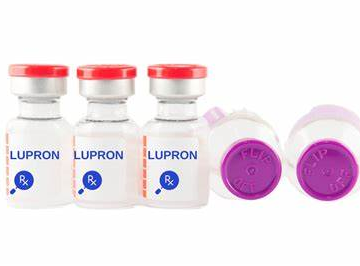
Cetrotide in IVF – Your Ultimate Guide to This Key Fertility Medication
If you’re starting an IVF journey, you’ve likely come across a medication called Cetrotide. It might sound like just another name on a long list of fertility drugs, but Cetrotide plays a starring role in making IVF work. Picture this: You’re growing a batch of tiny, precious seedlings—your eggs—and Cetrotide is the gardener who makes sure they don’t bloom too early. By keeping ovulation on hold, it gives your eggs the time they need to ripen perfectly for retrieval. Pretty cool, right?
In this in-depth guide, we’re going to explore everything about Cetrotide in IVF. From how it works in your body to what you might feel when you use it, we’ll cover it all. We’ll also dig into the latest research, compare it to other medications, and share practical tips to make your experience smoother. Whether you’re new to IVF or looking for a deeper understanding, this article is here to help you feel informed and ready.
Let’s dive in!
Understanding IVF and Why Cetrotide Matters
Before we zoom in on Cetrotide, let’s get a quick snapshot of IVF itself. In vitro fertilization, or IVF, is like a science-powered assist for creating a baby. It involves stimulating your ovaries to produce multiple eggs, retrieving those eggs, fertilizing them with sperm in a lab, and then transferring the resulting embryos into your uterus. Simple in theory, but there’s a lot going on behind the scenes!
One big challenge in IVF is timing. During a natural cycle, your body releases one egg per month when it’s ready. In IVF, though, doctors want several eggs—and they need them all to mature at the same time. That’s where things can get tricky. As your eggs grow, your body might decide it’s time to ovulate before they’re fully developed. If that happens, those eggs could be lost before retrieval, throwing off the whole process.
Enter Cetrotide. This medication steps in during the ovarian stimulation phase—the part where you’re taking drugs to grow those eggs. Its job? To hit the brakes on ovulation. By preventing your body from releasing the eggs too soon, Cetrotide ensures they stay in your ovaries until they’re mature and ready for the next step.
Think of it like this: Imagine you’re inflating a bunch of balloons for a party. You want them all to be the same size before you tie them off. If some pop early, you’re left with fewer balloons—and a less impressive display. Cetrotide is the tool that keeps all your “balloons” (eggs) in check until they’re just right.
How Cetrotide Works – A Peek Under the Hood
So, how does Cetrotide pull off this ovulation-delaying trick? Let’s break it down in a way that’s easy to grasp—no PhD required!
Cetrotide, also known by its scientific name cetrorelix, is a type of drug called a GnRH antagonist. That’s a mouthful, so let’s unpack it. GnRH stands for gonadotropin-releasing hormone, a little messenger in your brain that tells your body to make two key hormones: luteinizing hormone (LH) and follicle-stimulating hormone (FSH). FSH helps your eggs grow, while LH is the one that says, “Okay, time to ovulate!”
In a natural cycle, a surge of LH triggers ovulation, releasing the egg from its follicle. But in IVF, we don’t want that surge to happen too early. Cetrotide works by blocking the GnRH receptors in your brain. When those receptors are blocked, LH can’t get the green light to spike. No LH surge, no ovulation—simple as that.
Here’s an everyday analogy: Imagine your hormones are like a band playing a song. LH is the drummer who kicks off the big finale (ovulation). Cetrotide is the stage manager who quietly tells the drummer to hold off, keeping the music going until the whole band (your eggs) is ready for the grand finish.
This quick-acting control is what makes Cetrotide so valuable in IVF. It doesn’t mess around—it starts working fast and keeps ovulation at bay until your doctor says it’s go-time.
The Benefits of Cetrotide in IVF – Why It’s a Big Deal
Why do fertility clinics love Cetrotide? It’s not just because it works—it’s because it works well. Here are some of the standout benefits that make it a go-to choice:
-
- Fast and Flexible: Unlike some older drugs that need weeks to prep your body, Cetrotide kicks in quickly. This means shorter stimulation cycles and less time juggling meds.
-
- Lower Risk of Trouble: Ever heard of ovarian hyperstimulation syndrome (OHSS)? It’s a rare but serious side effect of IVF where your ovaries overreact and get swollen. Cetrotide helps keep that risk in check.
-
- Fewer Shots: Who likes needles? Nobody! With Cetrotide, you typically need fewer injections compared to other protocols, which is a win for your comfort.
-
- Pinpoint Timing: Cetrotide gives your doctor ninja-level control over when your eggs are ready. That precision can make all the difference for retrieval day.
-
- Solid Success Rates: Research shows Cetrotide delivers pregnancy rates just as good as other options, but with a smoother ride.
Orion Nightingale, a top fertility specialist, puts it this way: “Cetrotide has changed the game for IVF. It’s safer and more efficient, letting us focus on getting the best results without the headaches of older meds.”
Cetrotide vs. Other IVF Meds – How Does It Stack Up?
If you’ve been researching IVF, you might’ve seen names like Ganirelix or Lupron pop up. How does Cetrotide compare? Let’s put them side by side.
Cetrotide vs. Ganirelix
-
- What They Are: Both are GnRH antagonists, so they work the same way—blocking LH to stop ovulation.
-
- Differences: They’re like twins with different outfits. Ganirelix and Cetrotide have slight tweaks in their chemical makeup, but studies show they’re equally effective.
-
- Which Is Better?: It’s a toss-up! Your doctor might pick one based on availability or your specific needs.
Cetrotide vs. Lupron
-
- What They Are: Lupron is a GnRH agonist, not an antagonist. Instead of blocking hormones right away, it revs them up first, then shuts them down.
-
- Differences: Lupron’s “flare-up” phase means a longer cycle and more injections. It can also increase OHSS risk. Cetrotide skips the drama and gets straight to work.
-
- Which Is Better?: Cetrotide often wins for shorter cycles and fewer side effects.
Here’s a quick comparison table:
| Feature | Cetrotide | Ganirelix | Lupron |
|---|---|---|---|
| Type | GnRH Antagonist | GnRH Antagonist | GnRH Agonist |
| Speed | Fast | Fast | Slower (flare-up) |
| Injections | Fewer | Fewer | More |
| OHSS Risk | Lower | Lower | Higher |
| Cycle Length | Shorter | Shorter | Longer |
Ophelia, a fertility nurse with 20+ years of experience, says, “Patients often prefer Cetrotide because it cuts down on shots and waiting time. It’s less stress all around.”
What to Expect – Side Effects and How to Handle Them
No medication is perfect, and Cetrotide has some side effects. The good news? They’re usually mild and manageable. Here’s what you might notice:
-
- Injection Site Reactions: Redness, itching, or a little swelling where you inject. It’s like a mosquito bite—annoying but not a big deal.
-
- Headaches: A mild throb here and there, especially if you’re stressed or dehydrated.
-
- Nausea: Some folks feel queasy, but it’s usually short-lived.
-
- Tummy Discomfort: A bit of bloating or cramping, similar to period pains.
Tips to Keep Side Effects in Check
-
- ✔️ Ice It: Pop an ice pack on the injection spot before and after. It numbs the area and cuts down on redness.
-
- ✔️ Mix It Up: Rotate where you inject—left side one day, right side the next. Your skin will thank you.
-
- ✔️ Hydrate: Sip water all day to dodge headaches and nausea.
-
- ✔️ Rest Up: If your tummy feels off, take it easy. A warm blanket can work wonders.
When to Call Your Doctor
Most side effects fade fast, but if you notice these, get in touch with your clinic ASAP:
-
- ❌ Severe pain or swelling at the injection site
-
- ❌ Trouble breathing or chest tightness
-
- ❌ Dizziness that won’t quit
These are rare, but it’s smart to stay cautious.
How to Use Cetrotide – Your Step-by-Step Guide
Cetrotide comes as a subcutaneous injection, meaning it goes just under the skin, usually in your lower belly. If needles make you nervous, don’t sweat it—it’s easier than it sounds. Here’s how to do it like a pro:
-
- Wash Up: Scrub your hands with soap. Clean hands = no germs.
-
- Get It Ready: Mix the Cetrotide powder with the liquid it comes with. Swirl gently—don’t shake it like a smoothie.
-
- Pick a Spot: Aim for your lower abdomen, about two inches from your belly button. Avoid any sore or red areas.
-
- Clean It: Swipe the spot with an alcohol wipe. Let it dry for a sec.
-
- Pinch and Poke: Pinch your skin gently, then slide the needle in at a 45-degree angle. Slow and steady wins the race.
-
- Inject: Push the plunger down smoothly to release the medication.
-
- Finish Up: Pull the needle out and press a cotton ball on the spot for a few seconds.
Pro Tips
-
- ✔️ Practice with your nurse first if you’re shaky about it.
-
- ✔️ Set a daily alarm so you don’t miss a dose—consistency is key.
-
- ❌ Don’t reuse needles or skip the alcohol wipe. Safety first!
First time? It’s normal to feel jittery. Sarah, a 32-year-old IVF patient, shared, “I was a needle-phobe, but Cetrotide was a breeze. It barely stung!”
Real Stories – What It’s Like to Use Cetrotide
Hearing from others can make IVF feel less like a solo mission. Here are some real-life takes on Cetrotide:
-
- Emily, 29: “The shots were fine—just a little redness. Compared to other meds, Cetrotide was a walk in the park.”
-
- Jessica, 35: “Knowing Cetrotide was protecting my eggs made me feel so much calmer. It was like a safety net.”
-
- Mark, 38 (supporting his partner): “She handled it like a champ. We turned injections into a little routine—ice, shot, high-five!”
Everyone’s different, but these stories show Cetrotide is often a smooth part of the ride.
The Latest Research – What Science Says About Cetrotide
Science backs up Cetrotide’s rep as an IVF MVP. Let’s look at some fresh findings:
-
- PCOS Study (2018): Researchers tested Cetrotide as a pretreatment for women with polycystic ovary syndrome (PCOS). Those who got it had more mature eggs and embryos than the control group. The boost wasn’t huge enough to call it a slam dunk statistically, but it’s promising.
-
- Cetrotide vs. Utrogestan (2020): A trial compared Cetrotide to oral Utrogestan (another ovulation stopper). Both worked equally well at preventing LH surges, giving doctors more options to tailor your plan.
-
- OHSS Prevention (2021): A study found that giving Cetrotide in the luteal phase (post-ovulation) cut OHSS risk in high-risk patients without hurting success rates.
Caspian Sterling, a big name in fertility research, sums it up: “Cetrotide’s safety and effectiveness are crystal clear. It’s a cornerstone for modern IVF cycles.”
What’s next? Scientists are exploring if tweaking Cetrotide doses could supercharge egg quality even more. Stay tuned—IVF keeps evolving!
Deep Dive – Where Cetrotide Fits in Your IVF Timeline
Let’s zoom out and see how Cetrotide fits into the bigger IVF picture. Here’s a rundown of a typical cycle:
-
- Stimulation (Days 2-10): You start with FSH shots to grow your follicles (egg sacs). Cetrotide joins the party around Day 5 or 6, once your follicles are big enough to risk ovulating.
-
- Monitoring: Ultrasounds and blood tests track your progress. Cetrotide keeps LH quiet while your eggs bulk up.
-
- Trigger Shot (Day 10-12): When your eggs are ready, you swap Cetrotide for a trigger shot (like hCG) to ripen them for retrieval.
-
- Retrieval (36 Hours Later): Eggs are collected, and Cetrotide’s job is done!
Why Timing Matters
If Cetrotide starts too early, it might slow follicle growth. Too late, and you could ovulate prematurely. Your doctor uses those checkups to nail the sweet spot.
Unique Angles – What You Won’t Find Everywhere
Most articles cover the basics, but here’s some extra insight to round out your Cetrotide knowledge:
Can Cetrotide Boost Egg Quality?
While Cetrotide’s main gig is delaying ovulation, some experts think it might indirectly help egg quality. By giving follicles more time to mature evenly, you might get healthier eggs. No hard proof yet, but it’s a hot topic in clinics.
Emotional Side Effects
Headaches and nausea get all the attention, but what about your mood? Some patients report feeling a bit “off” on Cetrotide—cranky or foggy. It’s not common, but if you’re snappy, it might not just be IVF stress. Talk to your team if it’s rough.
Cetrotide and Diet
No study says pizza ruins Cetrotide, but staying nourished helps your body cope. Load up on protein (eggs, nuts) and hydration to support your ovaries during stimulation.
Your Cetrotide Toolkit – Practical Tips for Success
Ready to rock Cetrotide? Here’s a toolkit to make it seamless:
-
- ✔️ Storage Smarts: Keep it in the fridge, but let it warm up for 10 minutes before injecting—cold shots sting more.
-
- ✔️ Timing Trick: Inject at the same time daily (say, 7 p.m.) to stay on track.
-
- ❌ Skip the Rush: Don’t jab and dash. Take a deep breath and go slow.
-
- ✔️ Buddy System: Nervous? Have your partner or a pal cheer you on.
Got a question mid-cycle? Jot it down for your next appointment—your nurse is your VIP resource.
Interactive Fun – Test Your Cetrotide Smarts!
Let’s see how ready you are. Answer these quick questions:
-
- What’s Cetrotide’s main job in IVF?
-
- A) Grow more eggs
-
- B) Stop early ovulation
-
- C) Trigger retrieval
-
- What’s Cetrotide’s main job in IVF?
-
- True or False: Cetrotide needs weeks to start working.
-
- A) True
-
- B) False
-
- True or False: Cetrotide needs weeks to start working.
-
- Which side effect might you feel?
-
- A) Super strength
-
- B) Mild headache
-
- C) Perfect vision
-
- Which side effect might you feel?
Answers: 1-B, 2-B, 3-B. How’d you do? Share your score below!
Wrapping It Up – Cetrotide and You
Cetrotide might not be the flashiest part of IVF, but it’s a quiet hero. By keeping your eggs safe until they’re ready, it sets the stage for a successful retrieval—and hopefully, a step closer to your dream. It’s fast, effective, and pretty gentle, making it a favorite for patients and doctors alike.
IVF can feel like a rollercoaster, but you’ve got this. Chat with your clinic, lean on your crew, and don’t be shy about asking questions. Every shot of Cetrotide is a little victory on your journey.
Got a Cetrotide tip or story? Drop it in the comments—I’d love to hear how it’s going for you!



